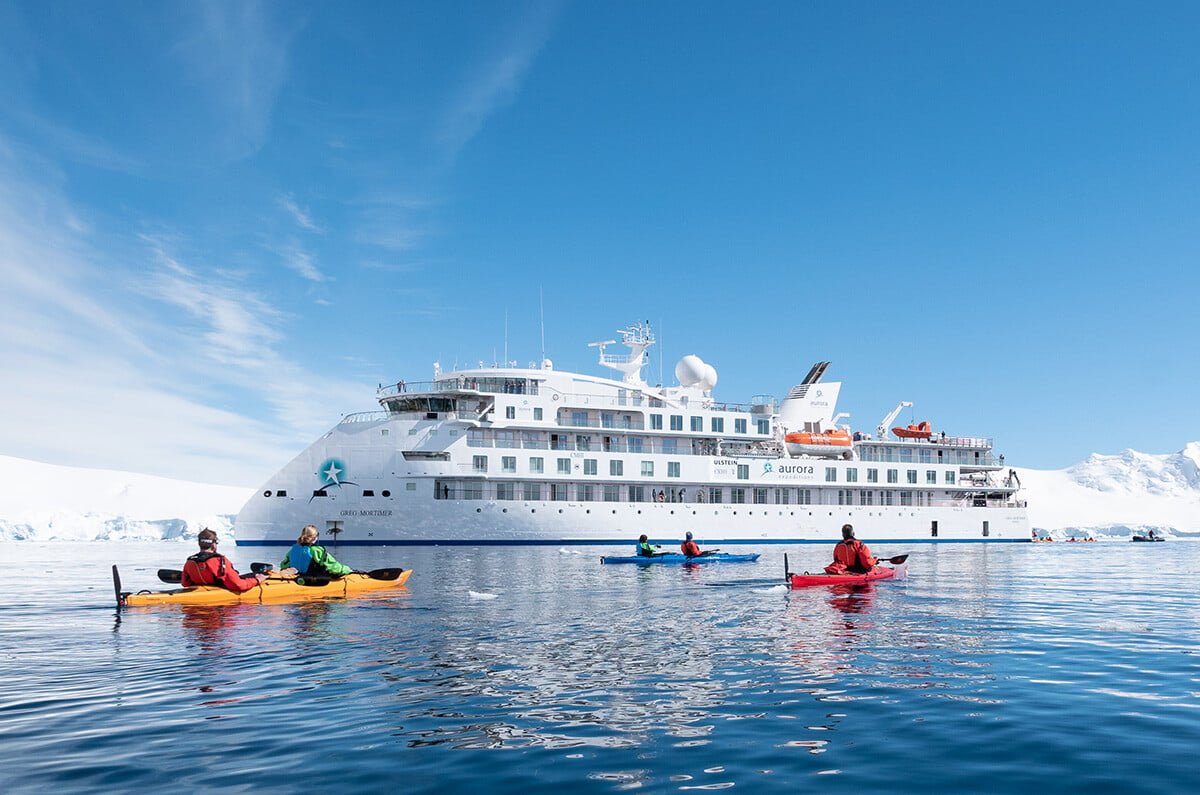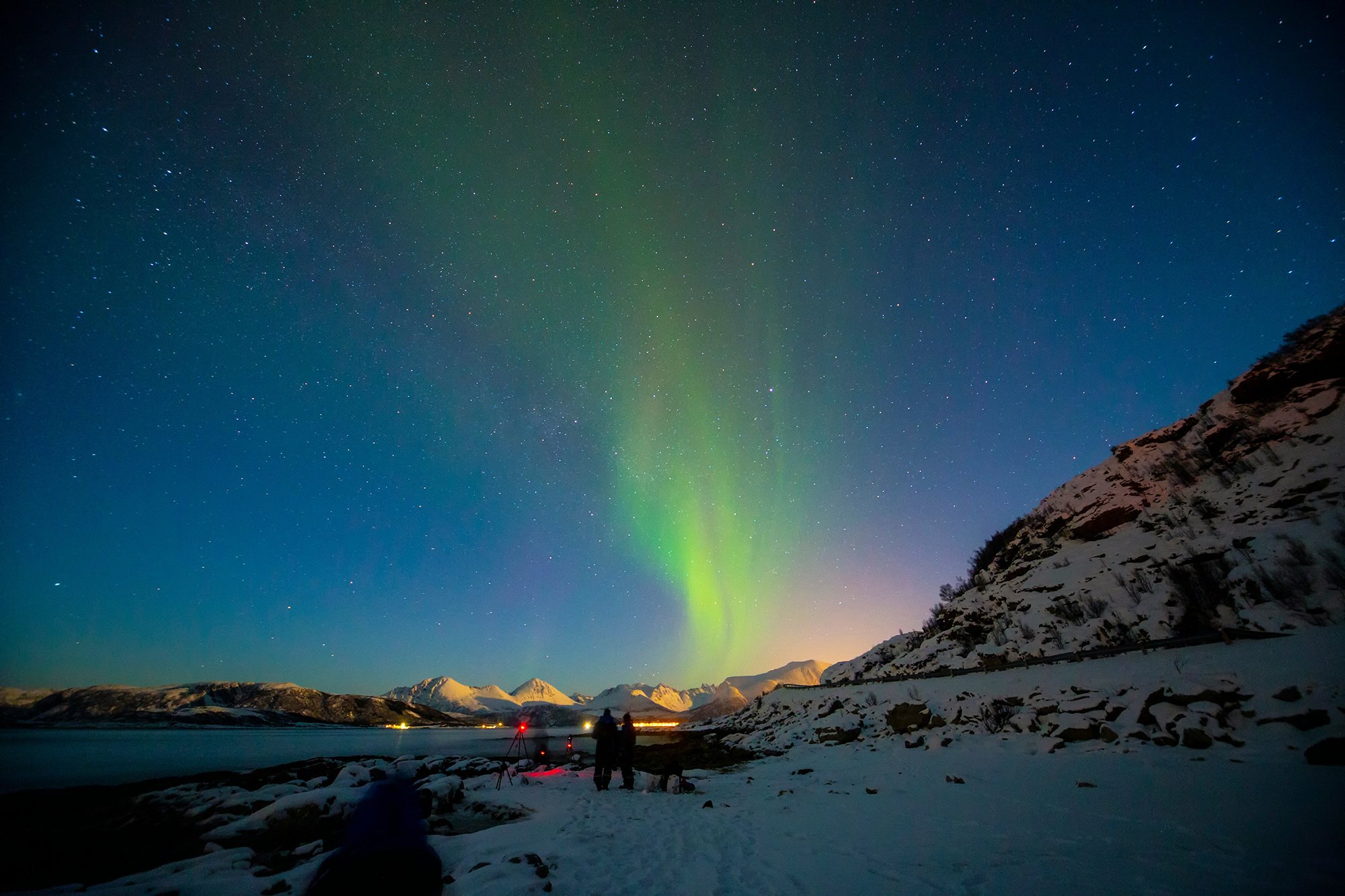Exploring Antarctica on Aurora Expeditions' Greg Mortimer.
Calling it a trip of a lifetime or the ultimate check off your bucket list doesn’t begin to do it justice. Antarctica is a place of extremes. It’s not only the coldest and most southernmost continent. It’s also the windiest and driest, all on a chunk of land that is nearly 98 percent ice. Yet it is teeming with life on land, in the air, and in the water. And the best way to experience it is on Aurora Expedition’s Greg Mortimer.
From the details the cruise line provided, we knew not to expect an ordinary trip. This was destined to be a voyage of discovery, an expedition from the start. It would sear memories into our imagination that we would never forget. The trip would test us physically and mentally and reward us with experiences like nothing else.
The Greg Mortimer
Our accommodations were on Aurora Expeditions, Greg Mortimer. The ship’s name honors the Aurora Expedition’s founder of the same name. To say that he and his expedition partner, Tim Macartney-Snape, were the first Australians to climb Mount Everest says it all. The spirit of adventure lives on in this magnificent 104-meter, state-of-the-art vessel.
Traveling to such a remote yet pristine place as Antarctica requires the best that technology can offer. The Greg Mortimer exceeds the imagination: admirably outfitted with Rolls Royce dynamic stabilizers for a smoother voyage. This ship is built for comfort with a sauna, spa, lecture theater, and library. Chef-prepared meals make it a culinary adventure, too. All of these amenities made for the utmost in luxurious travel.
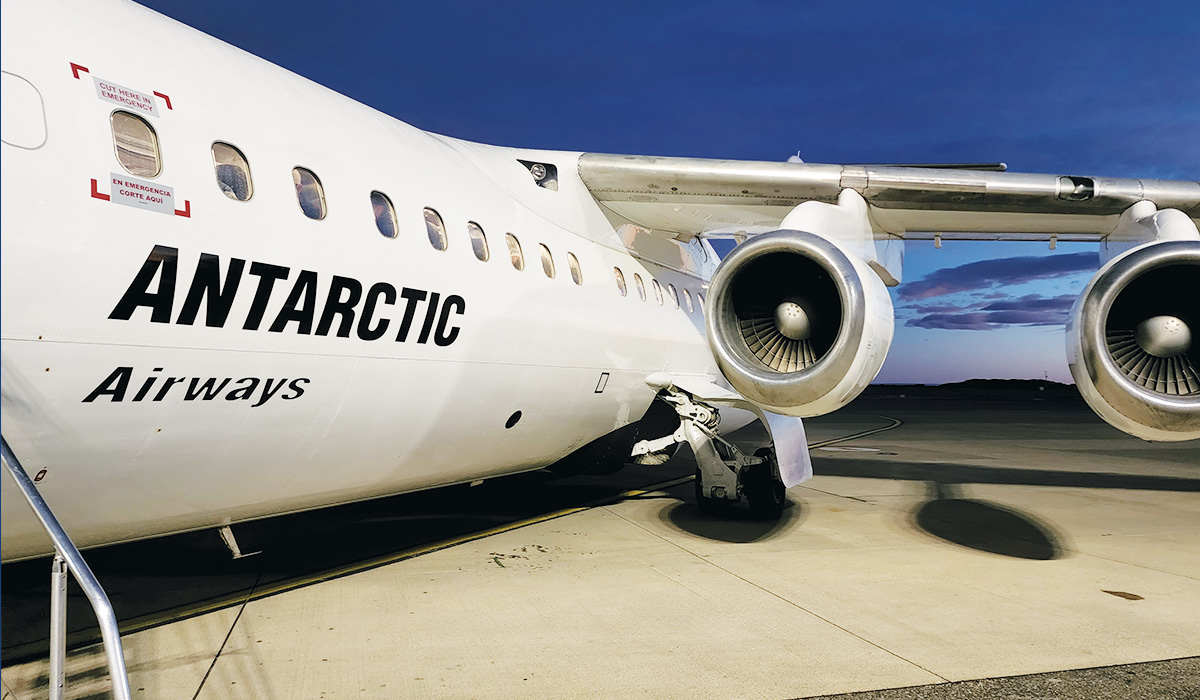 Day One | Frei Station
Day One | Frei Station
The staging area for Antarctica expedition cruises is either in Ushuaia, Argentina, or Punta Arenas, Chile. Ours was the latter. By air, it’s only a two-hour flight from Chile's international airport to Punta Arenas. The alternative is sailing through the rough waters of the Drake Passage. The 50-hour, 500-mile trip isn’t for the faint of heart, thankfully, we bypassed the turmoultuous waters and flew.
It’s a fantastic feeling as you leave South America and get your first glimpse of Antarctica. Our destination was Frei Station on King George Island. It was dotted with many small huts of different bases. Some edifices are historical remnants of past research stations. It felt surreal seeing them since no one lives on the continent. The realization hits you that you’re in the most remote part of the planet.
Our welcoming committee included our first encounters with Gentoo Penguins and Antarctic Shags. Our Expedition Leader Flo helped us get outfitted with boots and lifejackets for our maiden voyage on the Zodiac boats. They are inflatable craft with shallow drafts that make them ideal for traversing water with floating ice and other debris. Riding in one is nothing short of a rush.

The gorgeous and imposing Greg Mortimer waited patiently for us in the bay. The staff went out of their way to make us feel welcome as we boarded. We settled in our cabins, trying to take in the realization that we were indeed en route to Antarctica.
Taking an expedition cruise to the continent is different from other trips. Mandatory briefings on IAATO (International Association of Antarctica Tour Operators) regulations, Zodiac operations, and the care of our gear followed lunch. Those participating in sea kayaking and snorkeling received additional instructions and specialized equipment. Both offered ways to explore the secluded inlets and the other hidden treasures of Antarctica.
The Greg Mortimer has a 132-passenger capacity. There were 85 of us from all over the world. Captain Oleg Kaptenko guided the ship south down the Bransfield Strait. Spectacular views of Punta Arenas lay behind us, and the snow and ice-covered islands of the South Shetlands in front dazzled us. Nothing could prepare you for such breathtaking beauty.
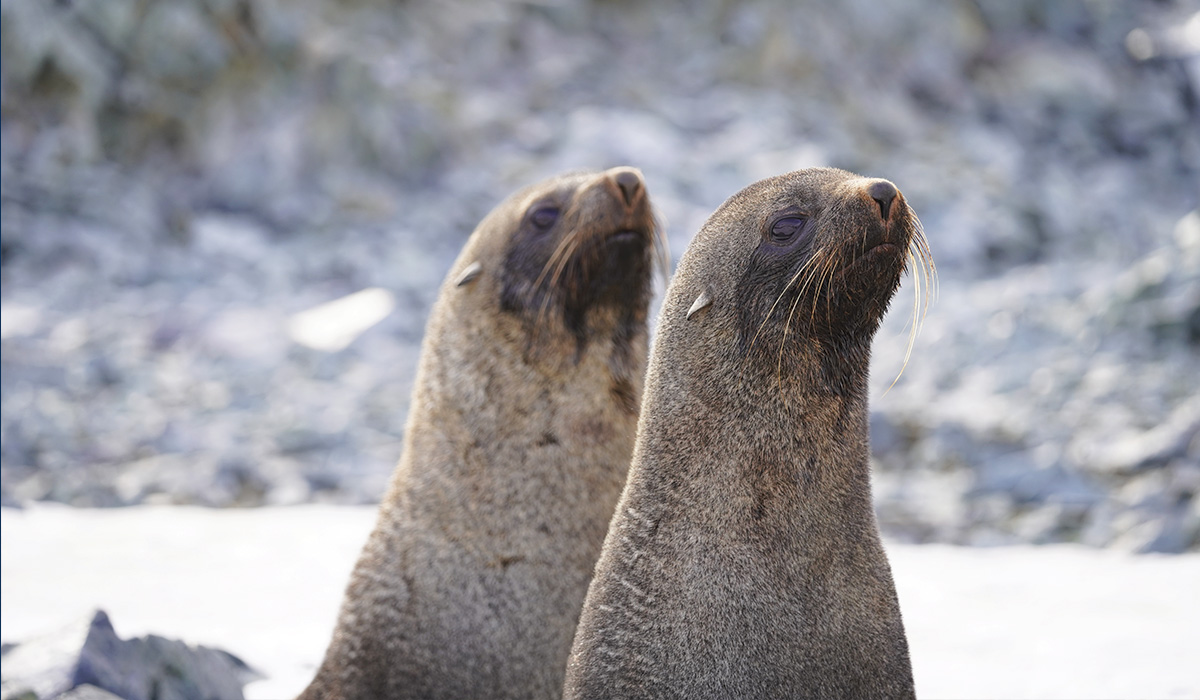 Day Two | Cierva Cove and Portal Point
Day Two | Cierva Cove and Portal Point
Day Two brought us our first taste of Antarctic adventure. The conditions and the sea couldn’t have been better when we anchored in Cierva Cove in Hughes Bay, already at 64° 08’ 08.83S. Our groups set out on the water in 10 kayaks and 10 Zodiacs. There were eight of us per boat. The Zodiacs traveled through the water remarkably stable in the sea of floating sea ice. The cruise brochure promised wildlife watching opportunities. Ours began moments after hitting the water, with our first glimpses of Chinstrap and Gentoo Penguins for the day, the air filled with their high-pitched squawking.
A Weddell Seal managed to pull its bulky, gray body onto the rocks on a small island located in Cierva Cove. We learned that these behemoths could grow to over 1,300 pounds! The show had only just begun. The Zodiacs continued their exploration of the area when we spotted two Leopard Seals swimming in the ice-filled sea. No doubt, they were on the hunt.
While the other Zodiacs continued cruising for wildlife, some of us stayed for the inevitable penguin kill. Who knew we’d have front-row seats to the Wild Kingdom? But Cierva Cove had more to show us. It wasn’t long before we spied our first Humpback Whale. It’s hard not feeling small when faced with an animal that can get over 50 feet long and weigh over 50 tons.
The awe-inspiring moments didn’t just come from the wildlife. Nature’s artistic touch was on full display as we came upon a naturally formed arch in a massive iceberg. The blue ice sculpture was like something out of a dream. While some of us stayed mesmerized by the sight, the others ventured past the Argentinian Primevera Station, one of 13 of the country’s research bases.
We wrapped up our morning explorations and headed back on board for a welcoming hot lunch. Captain Kaptenko headed the Greg Mortimer to the Gerlache Strait. Apparently, the Humpback Whales weren’t finished astonishing us, as the call came over the public address system. We counted at least 16 whales, some getting quite close to the ship. The air was filled with the sounds of cameras clicking.
Alas, the pleasant weather that greeted the day slipped away as we anchored off Portal Point, our first continental landing. The kayakers took to a Zodiac to get their close-up view of the Humpbacks feeding on krill. The rest of us descended on the snow and ice-covered hills to watch more squawking penguins and see our first Antarctic Fur Seals. While we struggled on the slippery ground, they managed just fine.
The day ended with the Captain’s Welcome Dinner. Captain Oleg Klaptenko introduced himself and his senior officers. We all toasted our Antarctic journey, followed by a delicious three-course dinner. While that may sound formal, it was anything but that. We were forging new friendships with our shared once-in-a-lifetime experiences. Everyone could hardly wait for the adventure to continue.
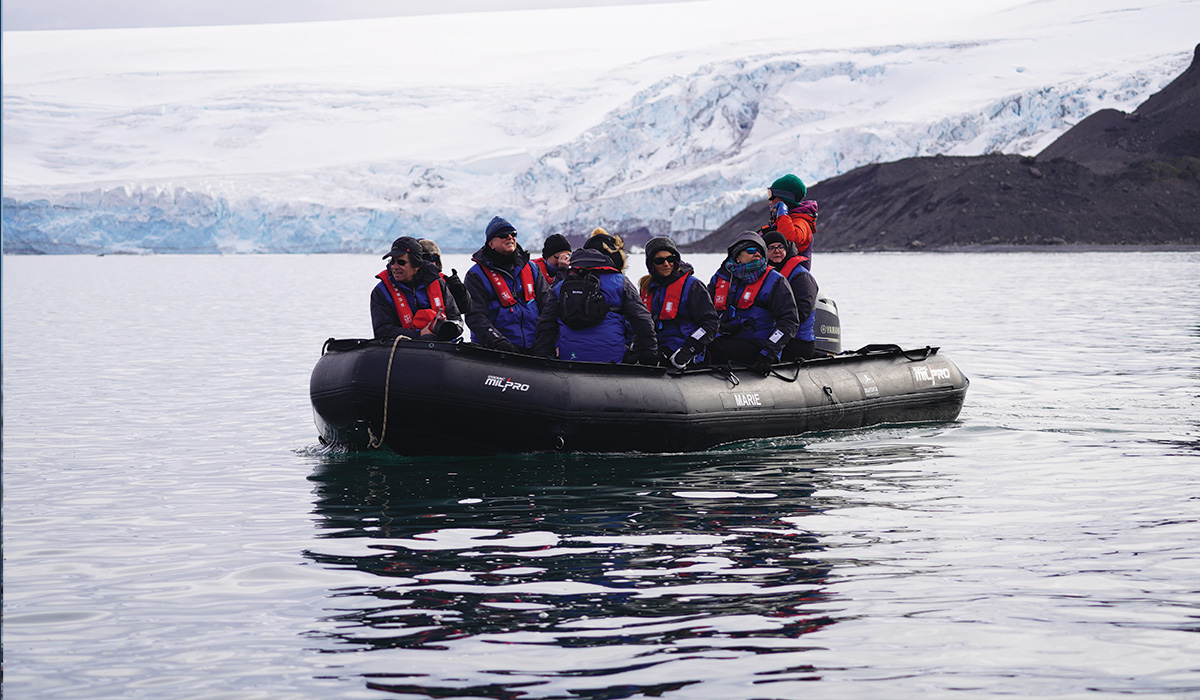
Day Three | Neko Harbor, Lemaire Channel
The day started as perhaps many of us thought Antarctica would be like—a raging snowstorm. It felt odd to be gliding south through the water with snow flying horizontally around the ship toward the Neko Harbor Glacier on the Antarctic Peninsula. The Argentinians call it Puerto Neko. Six other countries have active territorial claims on the continent. Suffice to say that the matter is still in dispute.
The snow lingered as we made landfall, greeted by the ever-present Gentoo Penguins. It was a sometimes grueling trek through the slush and crowd of birds. Many were reluctant to give way to us. Many of the penguins were from the last summer’s brood. Some were molting, and others were seemingly immature. Nature and the approaching winter will likely take a heavy toll on them.
We plodded along carefully, trying our best not to disturb the birds. You can’t help but smile at the penguins with their bright orange beaks and soft, fuzzy down. It’s all you can do not to pick one up and hug it. The air was heavy with the odor of dozens of birds crammed together. The ones that make it to two years will return to nest here again, as generations before have done.
Part of our group went on to explore more of the glacier. Others headed back to the beach and the waiting Zodiacs. The sleet made it challenging yet exhilarating. It certainly wreaked havoc with our cameras. Soon, we were back on board the Greg Mortimer to warm up and settle in for the day after our adventure.
Later that afternoon, we were treated to official presentations by 16 staff members. John gave an informative talk on the “charismatic megafauna” we observed. The day’s highlight came when we were called to the observation lounge or the wings. The Greg Mortimer was about to enter the narrow passage of the Lemaire Channel.
The Lemaire Channel was probably the most breathtaking sight we’d had seen until then. It’s no wonder that it’s on every Antarctica tourist’s must-see list. Steep, imposing cliffs flank each side with snow and blue ice, creating a stunning picture. Icebergs dotted the channel, making us question whether we’d get through it. A Chilean research ship advancing toward us promised a safe passage.
Captain Klaptenko sailed the Greg Mortimer through the channel going from north to south. The scenery was awe-inspiring. Just when you thought you had seen the most beautiful sight on Earth, you’d spot something else that was even more heart-stopping. It was truly a sight we’d never forget. Even today, It’s hard not to get choked up just thinking about it.
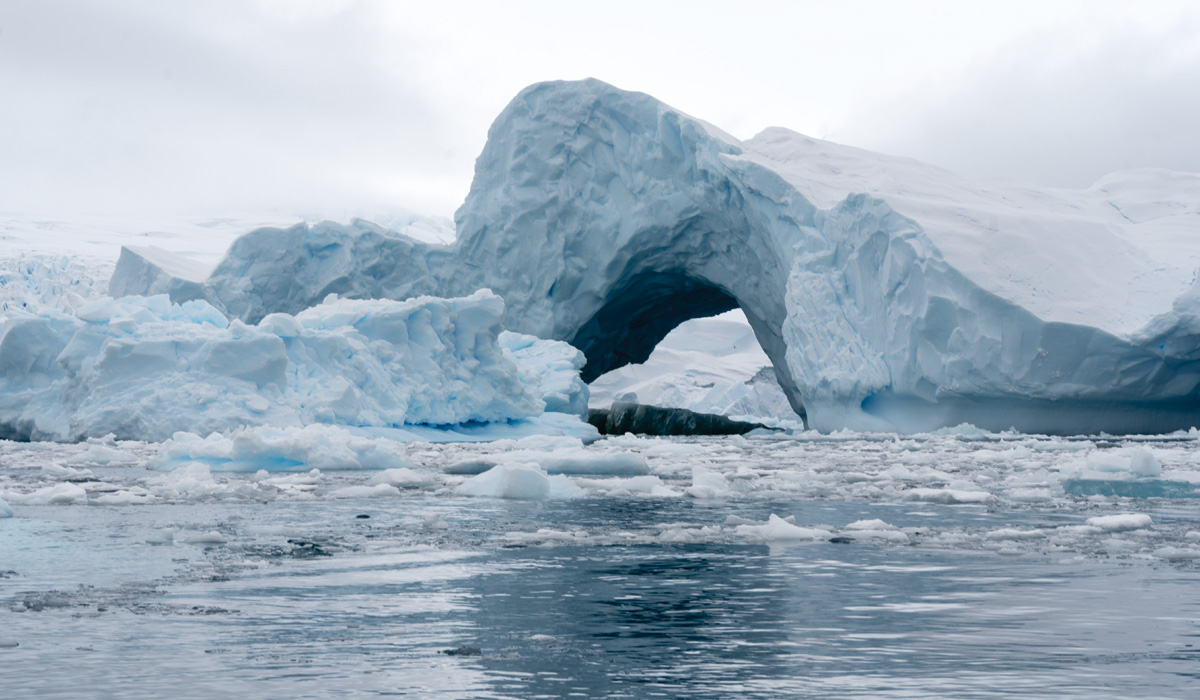
Day Four | Detaille Island, Crystal Sound
The day started with another unforgettable moment. Our Expedition Leader Flo woke us at 5:27 a.m. to say that we had crossed the Antarctic Circle at 66° 33.3’S 067° 32.0’W. It took a while for it to sink in that we had made this tremendous journey to this point. But our adventures were just beginning.
Our itinerary originally included a visit to “Base W” of the British Antarctic Survey on Detaille Island. The unoccupied research station was part of the UK’s scientific contribution to the International Geophysical Year (IGY). It was a groundbreaking 18-month project to conduct polar research in several disciplines. There were ambitious plans for its continual role in these endeavors.
But then, as now, the Antarctic ice proved unstable and dangerous. The researchers abandoned the base in 1959, leaving an unearthly relic of the once-bustling station. We also gave up our plan to visit it because of a precarious ice overhang that threatened a safe landing. While we couldn’t visit the hut and its outbuildings, we observed them from our Zodiacs, bobbing in the icy sea.
We then toured around the island. Even though we didn’t see the station up close, we encountered lazing Crabeater Seals on the rocks. These animals usually dive and feed at night. We saw them when it was time for a snooze. Despite their appearance, they are quite fast and agile on land. We spotted the occasional tuxedo-colored Adelie Penguin perched atop an iceberg along with the seals.
Back on the ship, Captain Klaptenko headed toward the northern end of the Gullet, a narrow transit between mainland Antarctica and Adelaide Island, known as the gateway to the infamous Marguerite Bay. Adelaide Island has two bases, both unoccupied due to unsafe conditions. As we'd soon learn, the bay has many ice-covered rocks and shoals, making for difficult navigation.
Low, gray clouds hung in the air with calm seas all around us. It belied what lay ahead of the ship. A wall of closely packed sea ice stretched out as far as we could see, blocking our passage forward. Our trip through the Gullet had ended abruptly. Nature and the ice had won this round. Captain Klaptenko changed course to go north and west of Liard Island. Meanwhile, we headed to the lecture theater.
One of the most enjoyable things about taking an expedition cruise is the opportunity to learn more about what you’re experiencing. We knew we were taking a step back in time, seeing the research stations on the islands, many sitting as silent reminders of expeditions past. A presentation by Dan Stavert on ice put everything in perspective.
Crew member Dot later talked about the IGY and the importance of the bases we had seen. Then, Steve gave an exciting account of the innovative Rymill expedition, which explored South Graham Land and the Weddell Sea. It earned John Riddoch Rymill several prestigious awards. Massimo showed a brief video he’d previously made about Detaille Hut.
We sailed south along the coast of Adelaide Island on our way to Marguerite Bay. Our journey would take us the farthest south of any Peninsula expedition vessels. And we weren’t even halfway done with our adventures.

Day Five | Stonington Island and Horseshoe Island
We embarked west of Adelaide Island to make our way to Marguerite Bay after being turned away at the Gullet. Our path took us to 68°30´00´´S, 67°00´00´´W, the southernmost point, and our turnaround spot. It was humbling to think that we were on the only expedition cruising vessel this side of the Antarctic Circle.
The bay was calm, so the snorkelers and kayakers could take to the water. The rest of us boarded the Zodiacs and headed for Stonington Island. It’s hard to put into words the beauty and historical importance of this place. It’s a small island with a big story. It is a bastion of both science and Nature.
Stonington Island has a rich research history. It is home to the East Base of the United States Antarctic Service (USAS) Expedition of 1939 to 1941. It is also the site of the British Antarctic Survey (BAS) Station E and the Ronne Antarctic Research Expedition from 1947 to 1948. The stations, outbuildings, and artifacts are all protected.
The bases also served as a staging post for access from the Island to the mainland via the Northeast Glacier via dog sleds. While not used anymore, it’s hard not to feel overwhelmed by all of it. Just thinking about the people living there and surviving the elements was awe-inspiring.
We trekked through fresh powder to a wall of massive ice cliffs towering above us. Crabeater and Weddell Seals sunned themselves on the dark rocks, undoubtedly filled with krill from an earlier dive. We also saw some Adelie Penguins milling around the island. It was fun watching them because they’re so social and constantly interacting with one another. It’s one way they stay safe from the seals.
The penguins were just about finished molting. Soon, they would dive into the seas to begin their migration. The birds don’t have a particular destination but instead follow the sun to stay in open water as the rest of Antarctica and its seas freeze. The island’s claim to fame is its designation as an Important Bird Area (IBA) by BirdLife International with its population of Imperial Shags.
We got the opportunity to learn about the penguins’ way of life firsthand with the Polar Plunge! It’s considered something of a rite of passage for Antarctic travelers. Of course, it’s optional, with some of our group taking up the challenge. Others watched as these brave souls dove into the icy waters.
Fortunately, the cruise had a professional photographer on-site to capture the moment. We went back to the ship for a welcome hot shower and delicious lunch before heading to Horseshoe Island. It was discovered and named by Australian polar explorer John Rymill who we had learned about earlier. The island is the site of the Horseshoe Base, a British research station active from 1955 to 1960.
The personnel carried out topographic, geological, geophysical, and meteorological surveys while it was in use. It was eerie walking these grounds. The base is now unoccupied but has all the trappings of a 1950s time capsule.
We continued our hike around the island, seeing skuas, Adelie Penguins, Fur, and Weddell Seals. It was alive and charged with all the wildlife's sights and sounds. It was a delightful way to end our expedition for the day with the squawks and calls of the birds following us to the Zodiacs.
Back on the Greg Mortimer, we dressed for dinner and headed up to Deck 8 for Aurora Expedition’s famous outdoor BBQ. It was the perfect meal to satisfy our appetites after our adventures. We had first-row seats to the spectacular sunset and amazing scenery as we cruised through Marguerite Bay. Not for the first time, we talked about how thankful we were to have made this trip.
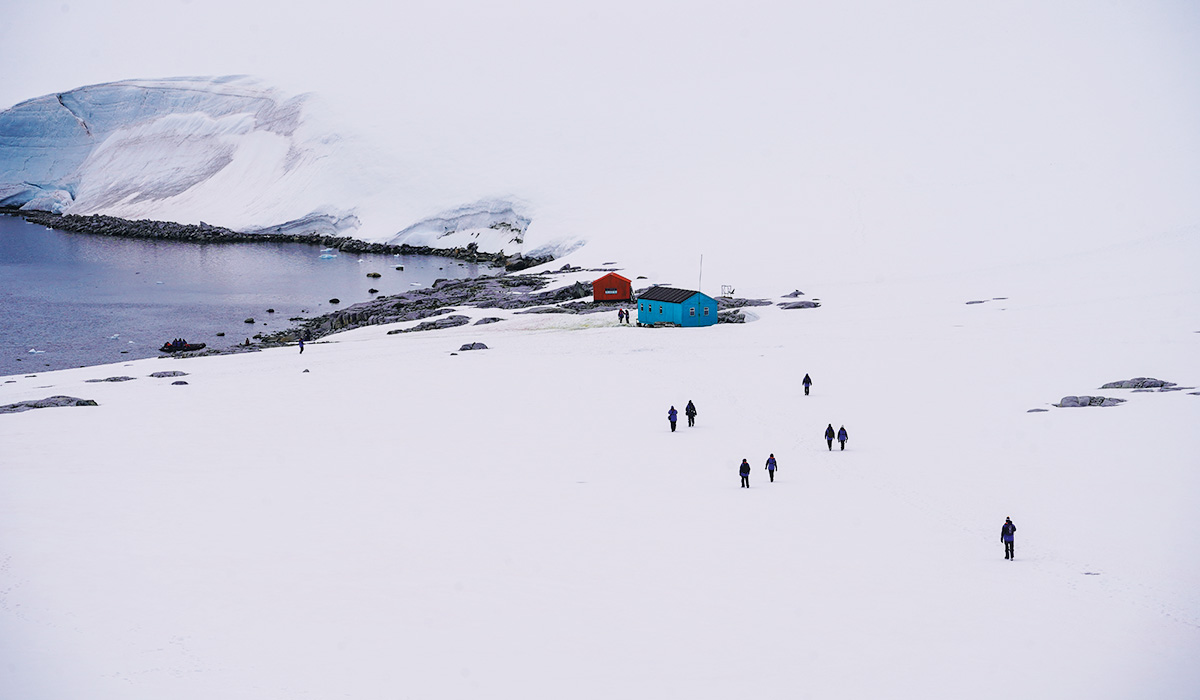
Day Six | Avian Island
Avian Island is located just south of Adelaide Island. As we found out that morning, it couldn't be more appropriately named. A couple of Snow Petrels had landed on deck sometime during the night, perhaps disoriented from the lights on the ship. The staff gave them time to gather their wits before helping them back into the water.
The Greg Mortimer sailed toward Avian Island. BirdLife International recognized it as another Important Bird Area. It is also one of the many Antarctic Special Protection Areas (ASPA). A round down of the list of breeding bird colonies tells the story, with 35,000 pairs of Adélie Penguins, 880 pairs of South Polar Skuas, 670 pairs of Imperial Shags, and many other sea birds.
Fur and Elephant Seals also visit the island occasionally. To say that the island was alive with energy is a gross understatement. The Zodiacs cruised around the island at a respectful 300-yard distance to avoid disturbing the wildlife. The kayakers joined us to take in the magnificent sights.
Coves provided shelter for the resting Elephant Seals and other animals. Now and then, one would grunt and carry on as we passed by, reminding all that this place was their turf. A few Zodiacs headed toward the southwest end of Adelaide Island. The Chilean station, Teniente Luis Carvajal Villaroel Antarctic Base or previously Base T, sits here.
The government maintained it as a summer-only facility until the death of one of its personnel. The deteriorating skiway had made the conditions too dangerous to continue. One look at the sheer ice cliffs near the base made it clear why they ceased operations there.
We headed back to the ship for lunch. Steve of the crew gave a talk on the history of Antarctica. It was followed by a historical film of life on Horseshoe Island’s British Base Y in the 1950s. Having seen the places in person, it was easy to appreciate how challenging life was then and now, living at these research stations.
With the spectacular backdrop of Adelaide island’s pristine snow-covered mountains, we journeyed back north toward the southern entrance to the Neumayer Channel with the promise of more adventures the next day.

Day Seven | Damoy Point and Fournier Bay
Our excursion for the day would take us to Damoy Point in Dorian Bay on the western side of Wiencke Island. It is a shallow, rocky harbor that provides ideal habitat for Gentoo Penguins. The birds are excellent parents and are very protective of their nests and chicks. The air was filled with chirping, hissing, and calling of the young and adults alike.
Predatory skuas hovered above, putting the penguins on edge. The down-covered chicks were adorable, nuzzling with their parents for warmth and safety. Damoy Point is also home to a turquoise-colored hut of the same name. It was primarily used for storage and as a transit station for staff and provisions of the British Antarctic Survey.
Staff would fly south from the skiway on the glacier above the hut to the nearby Rothera Research Station on Adelaide Island. It was last used in 1993. Today, it is a Historic Site or Monument (HSM) of Antarctica. It’s a lonely sight, seeing the hut with nothing else around it—except for penguins!
The seas were calm, giving the kayakers and snorkelers a chance to do some exploring. A few of the Zodiac group headed toward nearby Port Lockroy to send off our hefty stack of postcards. The bay is the site of the most southerly operational post office in the world. Hopefully, they would make it to their prospective destinations.
That afternoon, whale watching at the southern Gerlache Strait was on the agenda. Several groups of Humpback Whales greeted us as we approached the south entrance to Dallman Bay, one of the gateways to the Antarctic Peninsula. We watched in awe as two whales made shallow dives off the bow, not really interested in us at all.
That day was also an opportunity to participate in Aurora Expeditions’ Citizen Science Program. John and Dan gathered interested individuals on Deck 8 for a seabird survey and cloud observation. It was a satisfying way to contribute and give back to all that we had seen and experienced. The expedition cruise line participates in several projects, including eBird and Global Observer.
Later, we sailed to Fournier Bay on the rocky Anvers Island. It is the site of the Trojan Mountain Range and Antarctica’s tallest peak, Mount Français, at a towering 9,055 feet. It was an incredible sight as we cruised around icebergs and sea ice. We ended the day with some talks about our adventures and a briefing. Fournier Bay provided a beautiful backdrop for our quiet dinner.
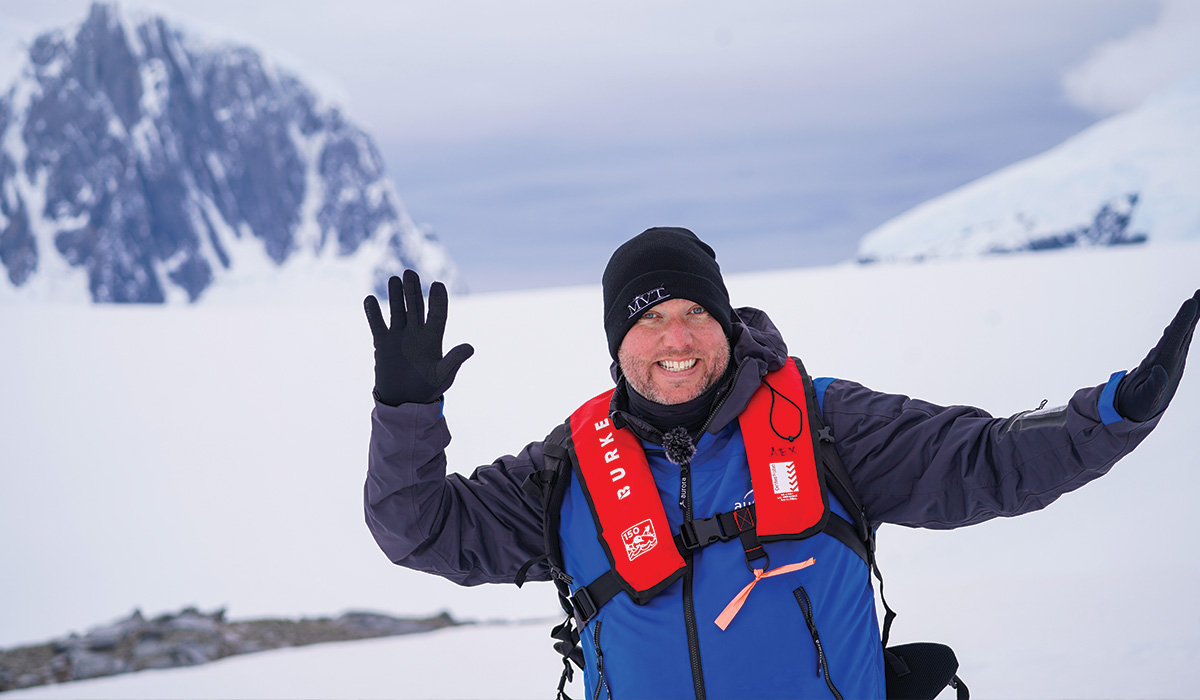
Day Eight | Danco Island and Paradise Harbor
The day’s destination was Danco Island in southern Errera Channel. There used to be a British research hut here called Station O that operated during the 1950s. It’s long gone, leaving the island to the porpoising penguins and other wildlife. The weather had taken a turn, forcing the cancellation of any kayaking that day.
The Zodiacs carted us off to the island. Gentoo Penguins welcomed us at the landing. They put on a show for us, waddling and swimming. The snorkelers had fun swimming with them in the icy waters and getting a bird's eye view of their world. Some of us hiked up the mountainside to take in the sights with lots of photographs before going back to the ship to warm up and have lunch.
The seas and wild had settled down that afternoon, allowing us to take a Zodiac cruise through the Aguirre Channel between Lemaire and Danco Islands to Paradise Harbor. Rumor had it that there was a white penguin named Lucy roaming these waters. The name couldn’t be more fitting. The deep-blue icebergs and crevasses provided a gorgeous backdrop for the frolicking penguins and feeding whales.
Back on the Greg Mortimer, we reviewed our plans to explore Hydruga Rocks, Spert Island, and Waterboat Point the next day. The latter would mark another once-in-a-lifetime moment with a four-year compass degree change. It would make a proper end to our Antarctic adventures.
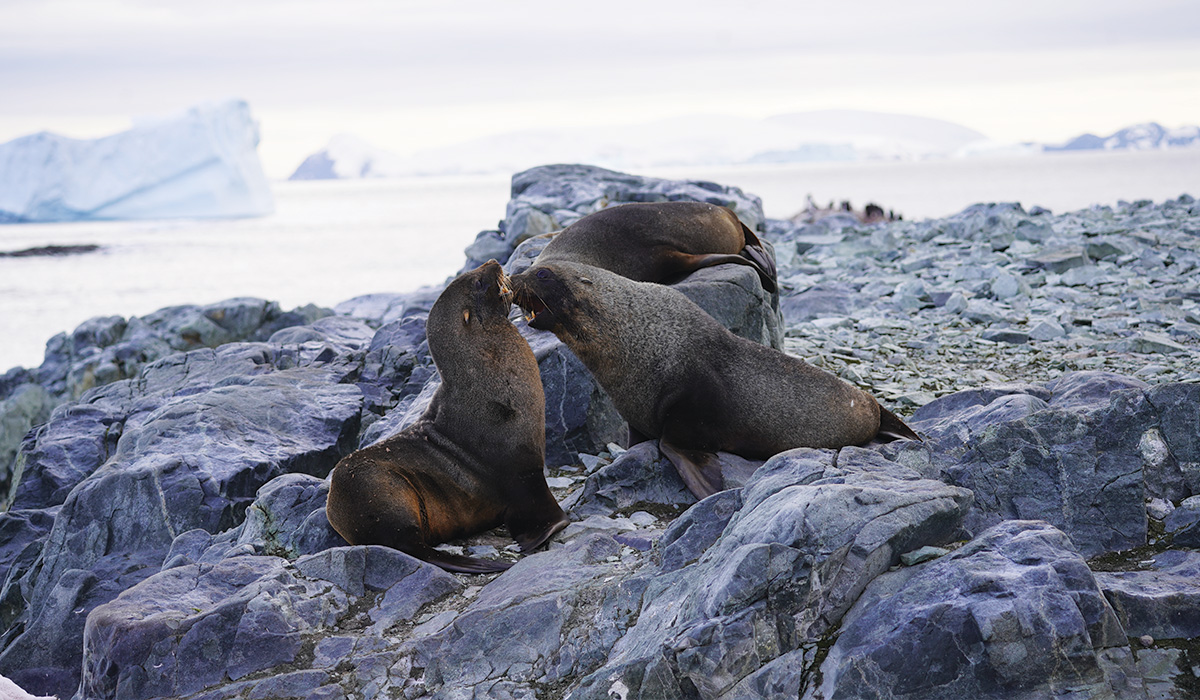
Day Nine | Hydruga Rocks and Spert Island
Our first stop that morning was Hydruga Rocks, named after the genus of the Leopard Seal. It’s aptly named because that describes what it is. Nevertheless, it’s a protected landing site for people and wildlife alike. BAS survey flights in 1956 photographed the area with the UK Antarctic Place-Names Committee giving it its unique name in 1960.
Several seals gathered on the rocks. It won’t be long before winter would set in with the wildlife following the ice. We watched as a Wilson’s Storm Petrel flew over the water, grabbing what it could find on the water’s surface. Fortunately, the seas were calm for the snorkelers and kayakers to enjoy a final excursion.
We headed back to the Greg Mortimer for lunch before our next destination of the day, Spert Island. We boarded the Zodiacs and sailed toward this wild but beautiful place. This island is a volcanic group of basaltic rocks that waves have carved over the centuries, leaving caves and arches in their wake. The most spectacular is the 60-foot Spert Arch.
We cruised around the island in the shadow of the silent rock giants towering above us. Resting Fur Seals growled as we sailed by, sending up clouds of skuas from the cliff tops. The scenery was spellbinding. It was difficult to leave. We returned to the Greg Mortimer for our last dinner and the embarkation briefing. It was hard to believe that our voyage was almost over.
Antarctica didn’t disappoint that evening, treating us to a beautiful sunset with dazzling colors that one could only see in this place. We enjoyed a hearty breakfast before traveling to South America and home the following day. Words can’t fall short of describing it. If there is any takeaway about this journey, it is that Antarctica will live in your dreams and heart forever. It is the ultimate adventure.




